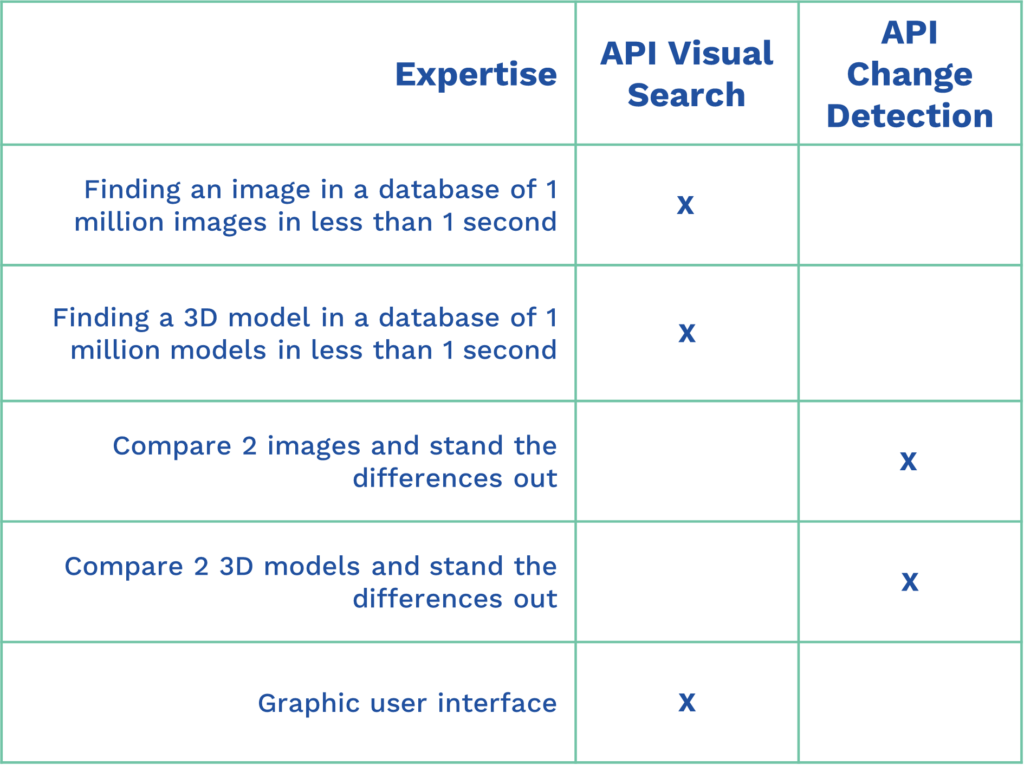Visual recognition is a highly promising technology, as we are witnessing the fast growing place that image data takes in our use of new technologies, and is even considered sometimes as a new international language. With today’s fast pace of life, visual recognition meets our increasing need for responsiveness.
Today’s questions are to wonder what exactly are we referring to when we talk about visual recognition? Which fields visual recognition applies to and how it’s so useful?
Computer Vision and visual recognition: practical search and usage
For reminber, computer vision is a field of artificial intelligence (AI) that enables computers and systems to derive meaningful information from digital images, videos and other visual inputs. It can be compared to a robotized eye. Augmented reality glasses, visual recognition software, object recognition, machine learning, computer vision technology usage is broad.
Computer vision is often narrowed down to one technology. A rather simplistic and inaccurate picture.
As there is technology to analyze facial expressions, there is one to identify a product online, and another to catch the license plate of an unreasonably fast driver! These three examples would use three very different computer vision technologies.
Indeed, various algorithms exist to meet various needs. If facial recognition helps you identify someone, image recognition will help you spot a piece of art. Furthermore, technology adapts to the media display. In that sense a static image and a video will not be managed the same way.

LTU’s technology, what possibilities in terms of visual recognition?
The LTU team has built an innovative solution that enables object and image processing thanks to a “unique signature”. Using all the visual aspects (shape, color, curves, or opacity) gives the highest level of accuracy.
Unlike Deep Learning which relies on multiple versions of one image, LTU’s technology only needs a single reference image to nail it down. By assigning a unique signature, LTU makes it possible to process images and objects in an unrivaled time. Count only 0.3 seconds for identification! (You can Find out more about how our technology works here).
What needs LTU meet?
Delivered in Rest API, LTU’s technology can easily be associated with other solutions, such as Deep learning models or some immersive technologies. It gives flexibility and allows LTU to personalize your computer vision solution and optimize your results.
When choosing LTU technology, you choose an open French solution that adapts perfectly to your needs.

- Image search engine
LTU’s technology allows users to find images (or products) that are similar or identical to your image. LTU visual recognition can search through an infinite database of images and offer associated results. Visual search technology will be explained later in this article.
This asset is particularly relevant in the fashion industry, e-commerce or in the artistic and cultural sector.
- Optical Character Recognition (OCR)
Optical Character Recognition is a technology used to distinguish printed or handwritten text within digital images.
This makes it possible to carry out a semantic research based on the words recognized in a media.
- Clustering
It consists in organizing images into groups using visual similarities. Thanks to the unique signature created by LTU technology, clustering is fast and accurate.
LTU’s dual process expertise for 2D and 3D assets
LTU’s know-how includes two key areas of expertise, the Visual Search API and Change Detection. These ultra-advanced technologies allow the processing of static 2D and 3D elements.
Here is an overview of our two areas of expertise.


Visual Search API: practical applications
This expertise relies on graphic patterns matching, similarities, colors, or keywords search algorithms.
- LTU is known for its 1 | 1 | 1 | 1 find an image or a 3D model among a database of 1 million references in less than 1 second with a single Core CPU.
- The use of the API is simplified thanks to a graphical user interface.

LTU’s Change Detection API: what usage?
LTU’s expertise detects the smallest of differences between 2 images. The Change Detection API is so accurate, it will spot an invisible difference to the naked eye! For your 2D and 3D images processing, the Change Detection API is based on the Fine Image Comparison and Fine Model Comparison algorithms.
Change Detection API is what you need to compare two images and highlight the differences between them, and need to compare two 3D models and highlight their differences.

Download the ebook
You think visual recognition technologies necessarily work with Deep Learning? Well, not always!
A visual recognition solution typically compares a reference object or image to a set of other objects/images and then identifies one or more “matches”. In a broad sense, it answers the question “Is this the same image?”.

